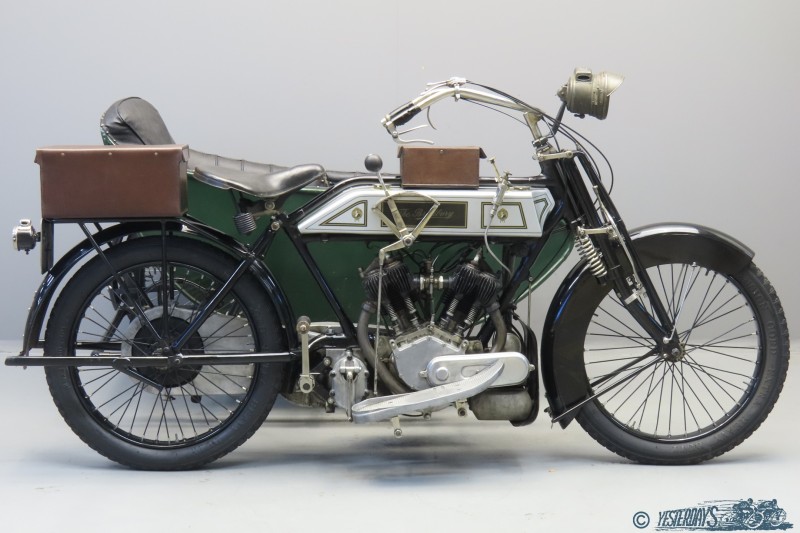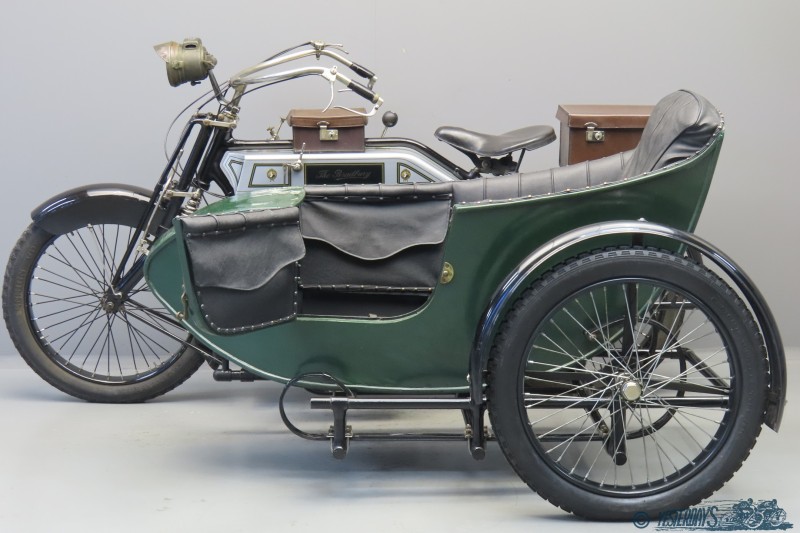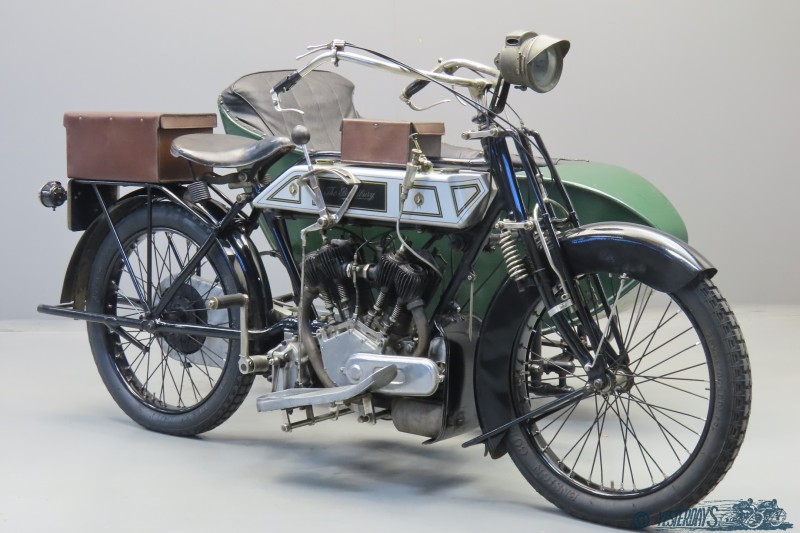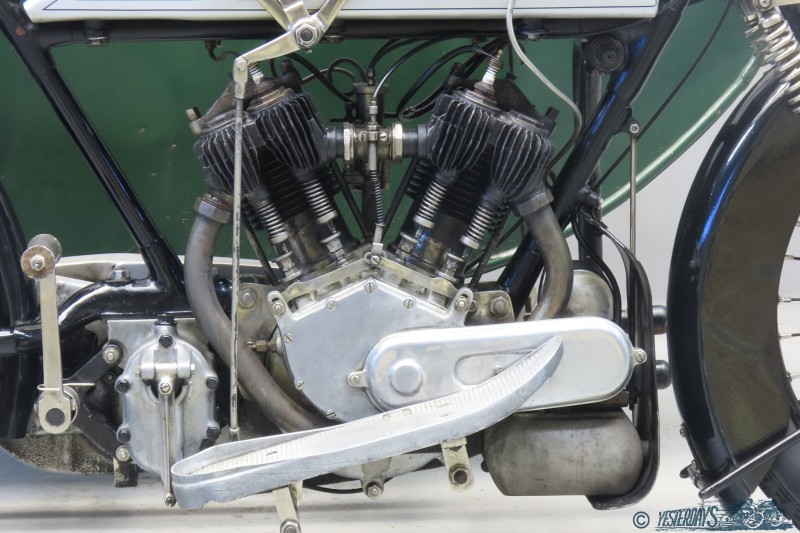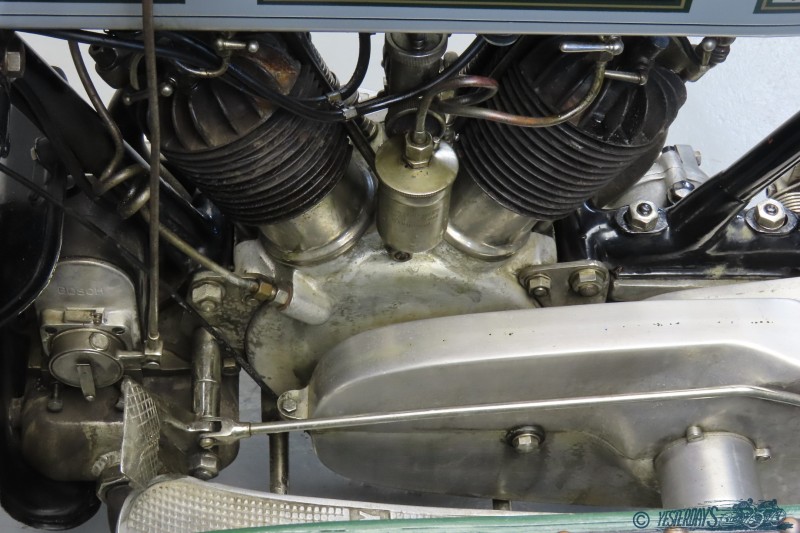Description
Bradbury 1914 6 HP 750cc side valve v-twin frame # 44923 engine # 8486
Bradbury & Co. was one of the pioneers of the British motor cycle industry: already in 1902 the company advertised a motorcycle driven by a Minerva clip-on engine. Before motorcycles were being produced at the Wellington Works in Oldham, the company – established in 1852 – had already earned a worldwide reputation as Britain’s and Europe’s first sewing machine manufacturer. Bradbury & Co. was active on various markets: the firm also made bassinettes, bicycles, forecars and a range of engineers’ and machine tools. In 1903 the company started producing motor cycles under Birch’s patent whereby the frame was brazed into the crank case. This crank case was made of steel; on the offside an aluminium side plate was fixed that housed the timing wheels and cams. This particular design point had the advantage that the engine was practically a part of the frame and this made for a very rigid construction. It would become a Bradbury trademark and was used till the end of motorcycle production in 1923. Year by year the models were improved: by 1908 both valves were mechanically operated, by 1910 the crankcase ran on ball bearings. The 1912 catalogue presented five models, all with bore and stroke dimensions of 89×89 mm. New for 1914 was a 3 ½ HP (500cc) opposed twin and the 6hp (750cc) V-twin. The 3½ HP single cylinder engine was uprated to 4 HP.
At Thursday November 6th 1913 factory rider Mr. Hugh Gibson gave demonstrations on Buncombe and Horse Shoe hills, to prove the performance of the 6HP Bradbury with side-car attached. At Horse Shoe hill, where the gradient is about one in four, he astonished those present by descending to the steepest part with four up, turning, and starting from a standing point. This he did several times, with different passengers, the engine accelerating and picking up in a marvelous manner, winning the applause of those present.
The rare machine we offer here has a 3- speed gearbox, enclosed primary and secondary chain, full acetylene lighting and leather toolboxes on fuel tank and luggage carrier. A reliable Bosch magneto is responsible for the spark and the mixture is controlled by a Brown & Barlow instrument. She comes with a VMCC dating certificate and letter stating that it is assumed that only six V-Twin Bradbury’s have survived, including post World War One models. It’s an older restoration that hasn’t been used in recent years and may need some recommissioning.

